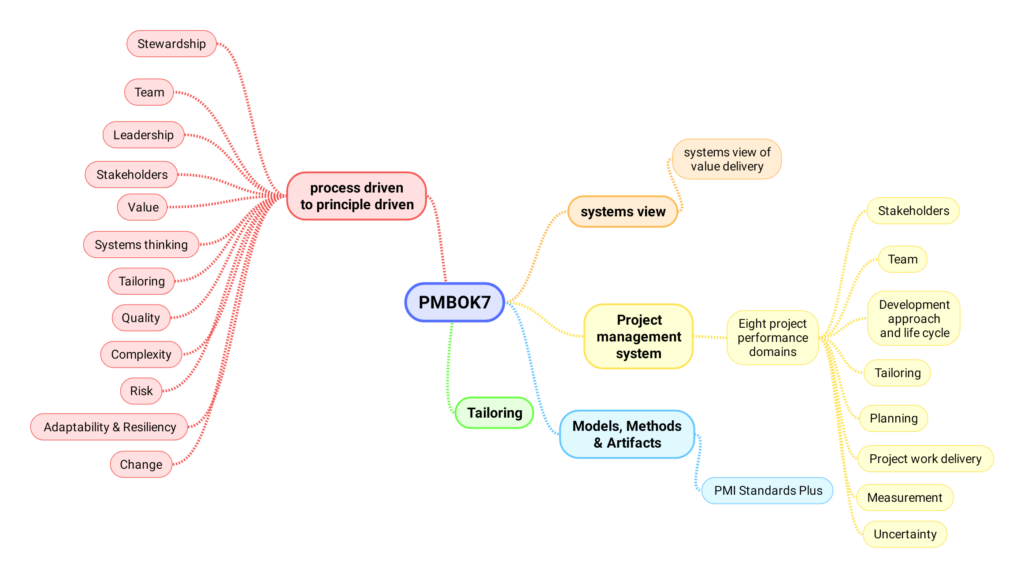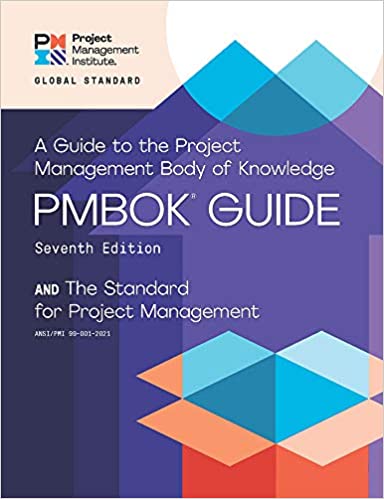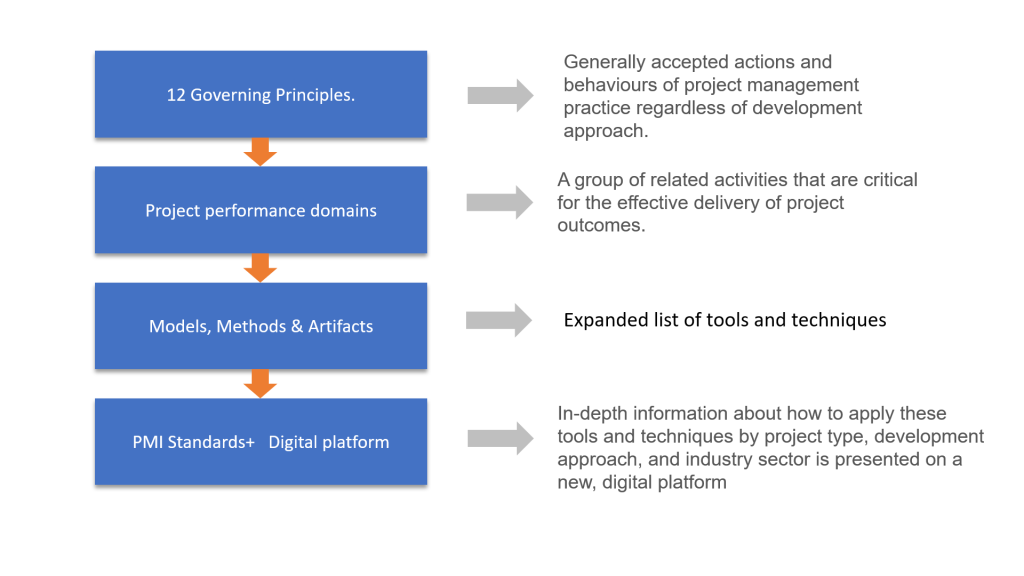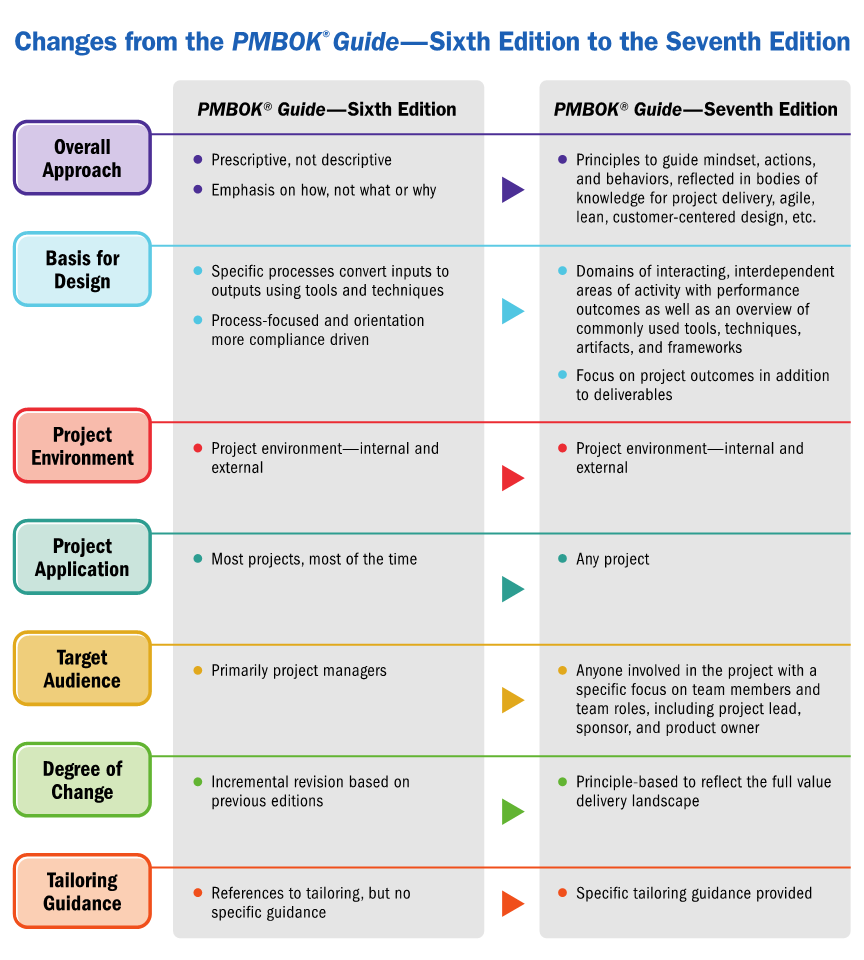What is the point in completing a project on time, within budget and meeting the complete scope, if the product of the project does not provide value to the sponsor / owner?. The single biggest issue for project failure is lack of solid business case. Many projects have solid business cases while starting the project, and very often they become irrelevant due to environmental impacts. The unknown – unknown risk of the pandemic itself have made many travel and tourism related projects irrelevant. Projects are plagued by uncertainties like never before, and it is the responsibility of the project manager to navigate these complexities successfully and achieve the intended benefits from the product / service the project delivers.
The shift of the project success criteria from just meeting the time, cost and scope criteria to delivering value to the owner of the project is the biggest change in PMBOK7 when compared to the earlier versions of the PMBOK. As a true project manager, one has to ensure the value delivery. Projects are initiated to achieve certain business goals and it is the opportunity of the project manager to ensure the achievement of these goals by delivering the intended benefits for which the project is undertaken in the first place.
The PMBOK7 brings more clarity to the project manager’s role.
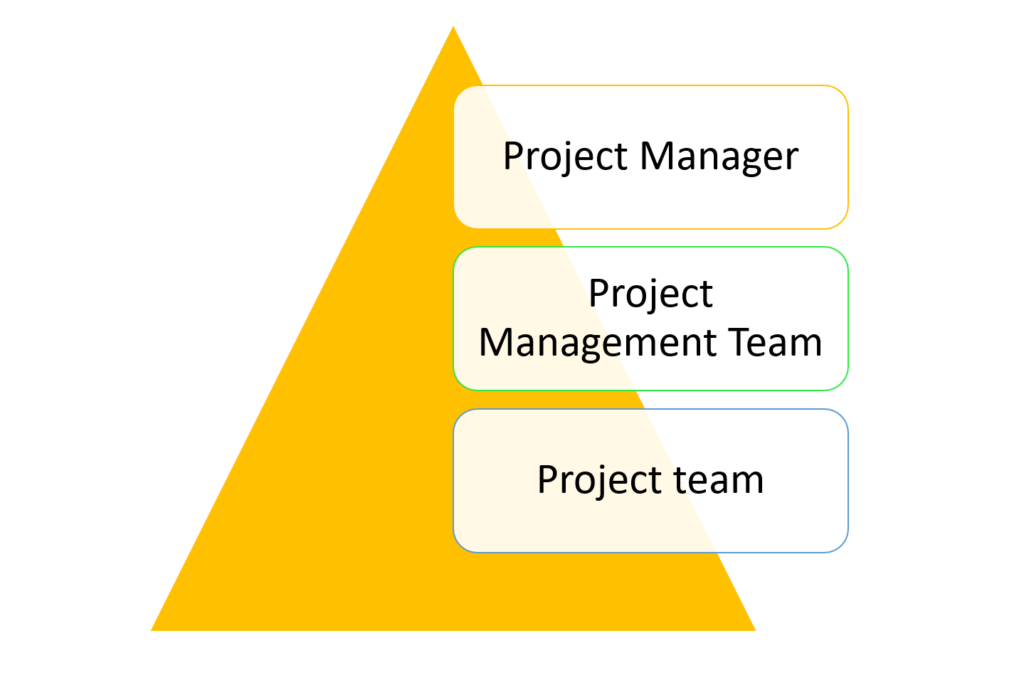
Project manager is ultimately responsible for the success and failure of the project. The project manager role demands active participation while deciding the project management approach which will help the project to eliminate all negative risks and maximize the benefits from the positive risks from the initiation till the closure of the project.
The project management team comprises of the Project controllers, Engineering managers, Architects, Team leaders, Project coordinators, Quality managers, Procurement managers, Risk managers . Resource managers, Communications managers etc.
The project teams comprises of the people who really execute the work
Till PMBOK7 shows the growth path for those who belong to the Project management teams at present to the true Project Manager who is at the helm of affairs and whose primary objective is to steer the project through all uncertainties and deliver the intended value to the project owner and end user.
Another key aspect of PMBOK7 is that it is general enough to be applied for any type of project with proper tailoring. It is a collection of Models, Methods & Artifacts that can be arranged / sequenced as per the project management approach of the project.
If we approach PMBOK7, with this as the context, then everything starts making sense.
Structure of PMBOK7
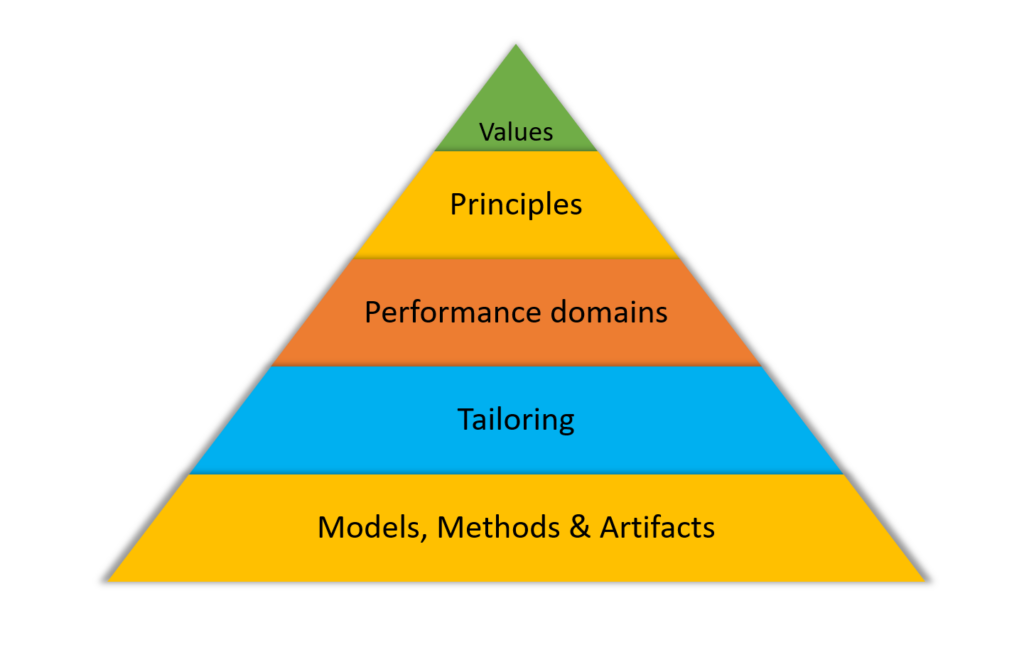
| Values | Principles | Performance domains |
| Responsibility | Stewardship | Stakeholders |
| Respect | Team | Team |
| Fairness | Stakeholders | Development approach & Life cycle |
| Honesty | Value | Planning |
| Systems thinking | Project work | |
| Leadership | Delivery | |
| Tailoring | Measurement | |
| Quality | Uncertainty | |
| Complexity | ||
| Risk | ||
| Adaptability & Resilience | ||
| Change Management |
Most of the Inputs, Tools & Techniques from PMBOK6 with some new additions forms the section Mpdels, Methods & Tools in PMBOK7.
| Models | Methods | Artifacts |
| Leadership models | Data gathering & Analysis | Strategy Artifacts |
| Communication models | Estimating | Logs & Registers |
| Motivation models | Meeting & Events | Plans |
| Change models | Other methods | Hierarchy Charts |
| Complexity model | Baselines | |
| Project team development models | Visual data and information | |
| Other models | Reports | |
| Agreements & Contracts | ||
| Other artifacts |
These models, methods and artifacts are linked to the performance domains. These linkages will be explained in the subsequent articles.


